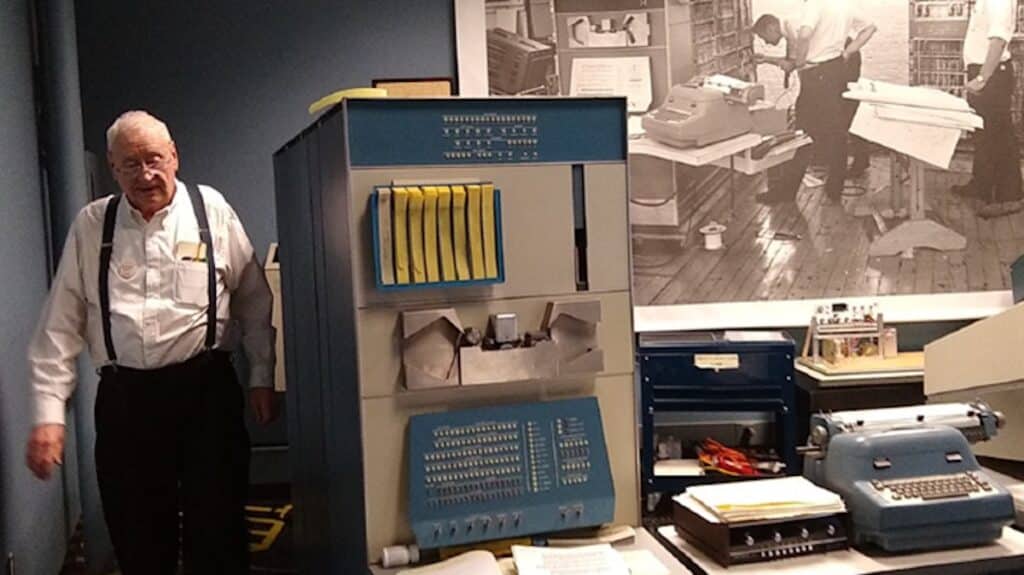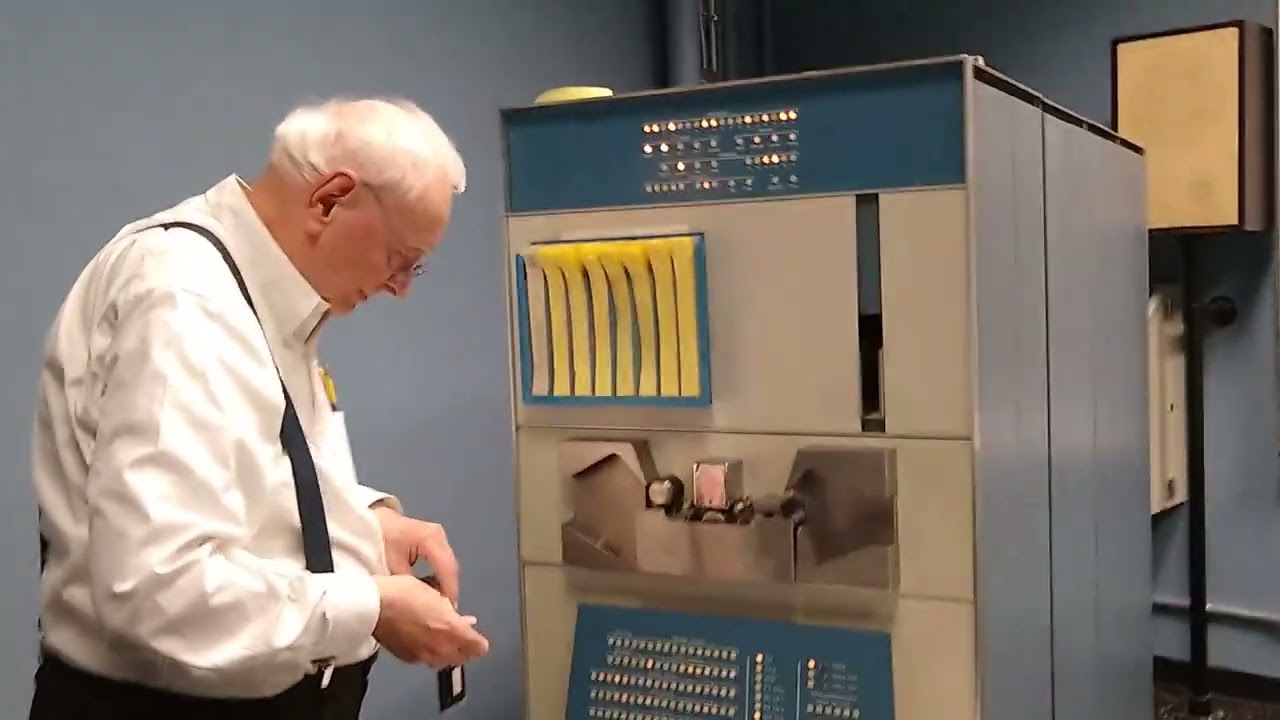In the history of computing, few innovations stand out as both groundbreaking and ahead of their time as the early experiments in digital music synthesis. At the center of this story is Peter Samson, a pioneering figure whose work with the TX-0 and PDP-1 computers in the 1960s laid the foundation for modern digital music. Samson’s invention of the Harmony Compiler and his contributions to real-time digital sound synthesis changed the landscape of music and technology, marrying the precision of programming with the artistry of music composition.
This article delves into the origins, development, and enduring impact of Samson’s groundbreaking work, which paved the way for digital audio workstations, music production software, and real-time sound synthesis tools used by millions today.
The Early Days: A Passion for Real-Time Music
In 1961, while still a student at MIT, Peter Samson embarked on an ambitious project to push the boundaries of what computers could achieve. The focus of his work was the TX-0, one of the earliest transistorized computers, which had a rudimentary built-in speaker. Samson programmed the TX-0 to play monophonic melodies, generating sound by sending precisely timed pulses to the speaker. Each note’s frequency corresponded to a specific number of pulses per second, with 262 pulses producing middle C, for example.
Samson’s programming ingenuity overcame the challenges of synchronizing the computer’s instruction cycles with musical timing. However, this early success soon inspired him to aim higher: creating polyphonic music, or music with multiple notes playing simultaneously.
Flip-Flop Polyphony: The Birth of Real-Time Multi-Voice Music
To achieve polyphony, Samson devised a novel solution using flip-flops—simple digital circuits capable of switching between on and off states. By utilizing the TX-0’s plug-in flip-flop units, he managed to produce up to three simultaneous notes, a feat unheard of at the time. His program read frequency and duration data from punched paper tapes, controlling the flip-flops to generate square waveforms for each note.
Samson’s chosen piece to demonstrate this innovation was J.S. Bach’s Organ Concerto in G Major (Presto), a work well-suited to his setup due to its contrapuntal structure and organ-like sound. While the TX-0’s hardware could only approximate the richness of a real pipe organ, Samson’s system convincingly emulated the instrument’s polyphony.
From TX-0 to PDP-1: The Harmony Compiler Emerges
In 1961, MIT acquired the PDP-1, a new minicomputer from Digital Equipment Corporation (DEC). Samson saw an opportunity to improve his system and make it more user-friendly. Recognizing the laborious nature of manually calculating note frequencies and durations for polyphonic pieces, he developed the Harmony Compiler.
What Made the Harmony Compiler Revolutionary?
- Simplified Input: Musicians could input notes using a symbolic shorthand rather than raw frequency data. For example, a pitch and duration could be represented as “C4 1/4” for middle C as a quarter note.
- Automated Calculations: The compiler converted symbolic inputs into machine-readable frequency and duration values, eliminating the need for manual calculations.
- Musical Articulation: Samson included symbols for staccato, trills, mordents, and other Baroque ornamentations, expanding the expressive capabilities of the system.
- Cross-Platform Compatibility: The compiler worked on both the TX-0 and PDP-1, ensuring broad usability.
With the Harmony Compiler, programming music became significantly more efficient, enabling composers and programmers to experiment with polyphonic and contrapuntal pieces more easily.
PDP-1 and the Distribution of Music Software
By 1962, the Harmony Compiler and its associated music player program were included in the standard software bundle for PDP-1 machines. This marked a significant milestone: Samson’s programs became some of the earliest programmable music software distributed to users.
The PDP-1 improved on the TX-0’s capabilities, supporting four-voice polyphony and offering more robust computational power. Samson’s refinements to the music player program included advanced rendering of opcodes, allowing for richer and more dynamic performances.
The Transition to Real-Time Digital Synthesis
Samson’s work with the PDP-1 paved the way for further advancements in digital music synthesis. In the 1970s, he developed the Systems Concepts Digital Synthesizer (known as the “Samson Box”), one of the first dedicated hardware-based real-time synthesizers. Unlike his earlier software solutions, the Samson Box was a standalone device designed to perform real-time synthesis with capabilities rivaling non-real-time systems like Max Mathews’ MUSIC programs at Bell Labs.
This focus on real-time interaction—a hallmark of Samson’s philosophy—continued to influence the development of music technology.
Rediscovering History: The PDP-1 Restoration Project
The story of Samson’s music software could have ended with the closure of MIT’s PDP lab. However, in an extraordinary twist of fate, a box of paper tapes containing the Harmony Compiler and related programs found its way to the Computer History Museum (CHM).
In 2004, Samson joined CHM’s PDP-1 Restoration Project as a volunteer. Upon discovering the tapes, he meticulously rewrote the player program from scratch, using the salvaged materials and his own flowcharts as references. A further stroke of luck occurred when his wife found a printout of the Harmony Compiler in their basement, enabling Samson to restore the compiler as well.
Legacy and Impact on Modern Music Technology
Today, digital music synthesis is ubiquitous, with software like Logic Pro, Ableton Live, and GarageBand empowering musicians worldwide. The foundational concepts of real-time synthesis, symbolic music programming, and polyphony—pioneered by Samson—are integral to these tools.
Key Contributions of Samson’s Work
- Real-Time Interaction: Samson’s insistence on real-time performance paved the way for interactive music systems and live digital performances.
- Symbolic Notation: His use of shorthand input inspired the development of music notation languages like LilyPond and ABC notation.
- Polyphonic Synthesis: Samson’s techniques for multi-voice music directly influenced the design of early synthesizers and modern virtual instruments.
Conclusion: A Harmonious Legacy
Peter Samson’s work represents a remarkable intersection of creativity, engineering, and musical artistry. From the TX-0’s flip-flop polyphony to the PDP-1’s Harmony Compiler, his innovations laid the groundwork for the modern era of digital music. His dedication to real-time interaction and user-friendly tools continues to inspire musicians and technologists alike.
Today, thanks to restoration efforts and Samson’s own contributions, the Harmony Compiler and PDP-1 music programs remain a living testament to the power of innovation. As digital synthesis continues to evolve, Samson’s pioneering spirit resonates as strongly as ever, reminding us of the endless possibilities when programming meets harmony.
Source: computer history


